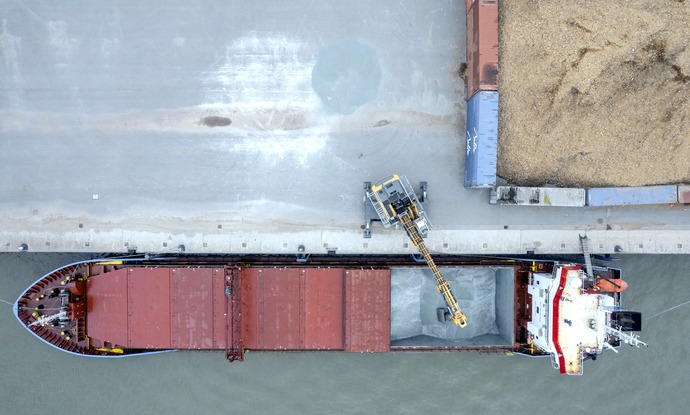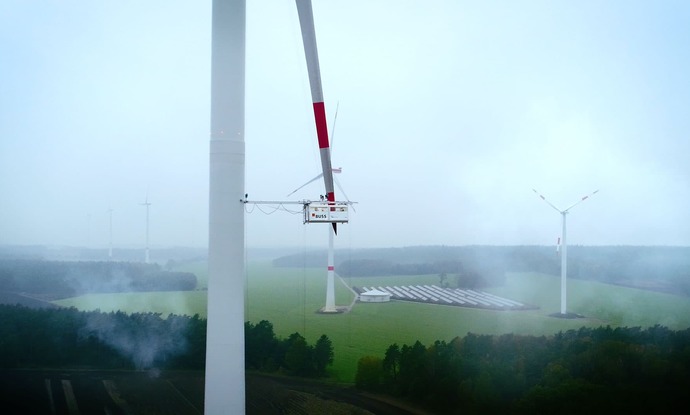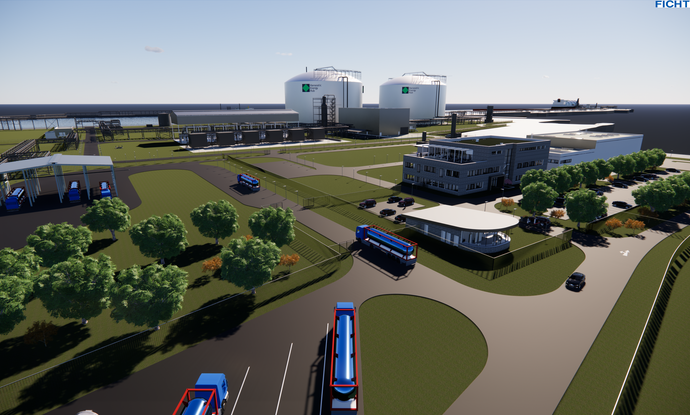ABOUT US
Founded in Hamburg in 1920, the Buss Group is still owner-managed today - the managing partner is Dr. Johann Killinger. For many decades, Buss was primarily a port company with at its peak four handling terminals in the Port of Hamburg. Today, the group of companies is broadly positioned in the business fields of port logistics, wind energy, gas and hydrogen, logistics real estate, shipping, and investments. With over 500 employees, the company offers its services in Europe, the USA and Singapore.
BUSINESS AREAS
Successful through constant change since 1920
In the more than 100-year history of the Buss Group, one thing in particular has been constant: change. The company's beginnings go back to the Gerd Buss stevedoring company, which specialized in loading and unloading ships in the Port of Hamburg. Over the decades, five other business areas were added in addition to port logistics.
Buss Port Services provides stevedoring services for general cargo vessels, plant logistics and specialized employee leasing.
Buss Energy specializes in the assembly and maintenance of wind turbines and port logistics for offshore wind farms.
Hanseatic Energy Hub GmbH is developing an import terminal for liquefied natural gas (LNG) in Stade, which is planned to go into operation in 2026.
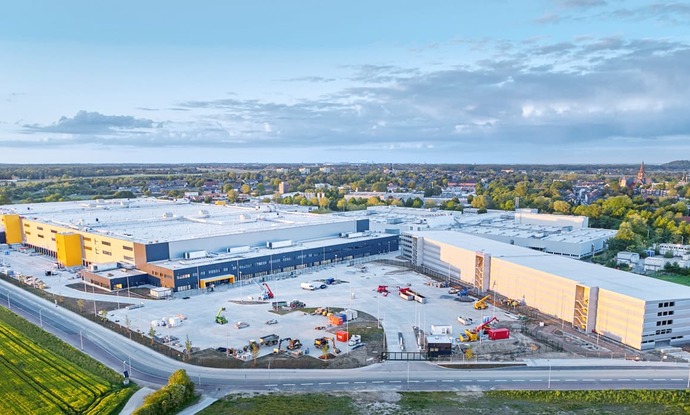
Logistics Real Estate
Ixocon focuses on the nationwide project development of logistics real estate and the revitalization of brownfield sites.
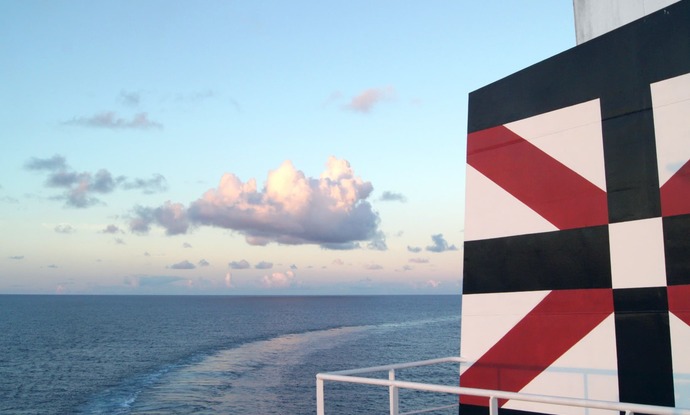
Shipping
In 2017, Buss Shipping merged with the Leonhardt & Blumberg shipping company. The company manages more than 40 container ships.
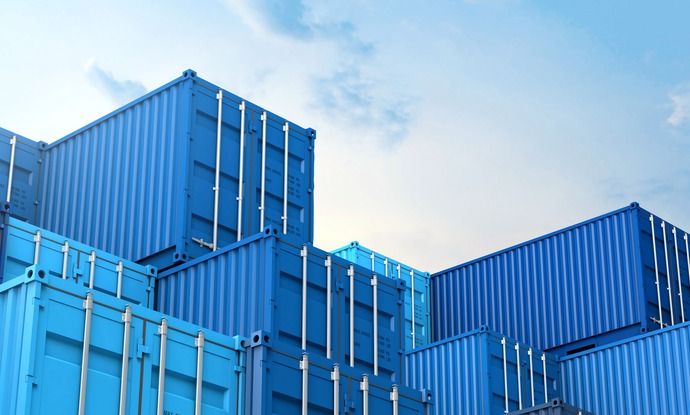
Investments
The issuing house Buss Capital Invest offers its customers investment products primarily in the field of container investments.
Management
The Management of the Buss Group
Dr. Johann Killinger
Managing Partner
Dr. Johann Killinger, born in Hamburg in 1960, is managing partner of the Buss Group. After studying law, he began his professional career with the management consultancy Roland Berger.
In 1991, Dr. Killinger joined the Buss Group, in which his family held a minority stake. At that time, Buss was mainly active in the port of Hamburg. After building up the logistics and logistics real estate divisions, Killinger acquired all the shares in these two divisions in 2000 and all the shares of the Buss Group in 2002. In 2003, Killinger founded the investment house Buss Capital in Hamburg and in Singapore, which became the market leader in container funds and an important financial partner for container leasing companies. Buss Shipping, which he founded in 2009, merged with the established shipping company Leonhardt & Blumberg Shipmanagement in 2017. The entry into the logistics of offshore wind turbines took place in 2011.
Eckhard Jung
Chief Financial Officer (CFO)
Eckhard Jung is CFO of the Buss Group. Before taking up his role at the company, he held the position of CFO at the Oiltanking Group, which builds and operates tank terminals for the storage of energy and chemicals worldwide and is a subsidiary of Hamburg-based Marquard & Bahls AG. After starting his career as a management consultant at KPMG, he held various management positions, including Business Manager at Techem AG and senior finance and business development roles at Wärtsilä, a Finnish group and supplier to the shipping and energy industries.
AT A GLANCE
The Buss Group in Figures
Years of Buss
The Buss Group was founded in Hamburg in 1920.
Business Areas
Buss comprises the business segments port logistics, wind energy, gas and hydrogen, logistics real estate, shipping and investments.
500 Employees
We offer our services with more than 500 employees in Europe, the USA and Singapore.
Nationalities
Our colleagues from 30 countries of origin work together successfully.
1920-Today
Our History
It all began in 1920 with Gerd Buss in Hamburg. The former ship's officer set up his own business for loading and unloading ships under his own name. In the 1930s, Buss was one of the leading stevedoring companies in the Port of Hamburg. However, the container presented the traditional port company with an existential challenge. Buss had to reinvent itself. Today, the Buss Group is broadly positioned in the business fields of port logistics, wind energy, gas and hydrogen, logistics real estate, shipping and investments.
ART PROMOTION
Contemporary art at the headquarters of the Buss Group
When the Buss Group moved to HafenCity, the idea arose to furnish the new building with art works in which the entire company and its business areas are reflected. Thus, a collection has been created in the Hamburg America Center (HAC) that impressively reflects the various corporate activities. A collection that surprises, moves, provokes and exhilarates.

Broken Figure of Thought
In the foyer, visitors are greeted by colorful containers by artists Philipp Ricklefs and Janine Eggert. The graduates of the University of Fine Arts (HFBK) in Hamburg have divided a standard container into individual dissimilar elements and painted them. Although the container did not exist in our founding year of 1920, it represents the link between the individual business areas.

The World, Things, Love
In most of Jacob Dahlgren's realized installations and wall works, a formal preoccupation with seriality is evident. The Swedish artist works primarily with industrially produced standard forms or the simplest geometric building blocks. From these he creates compositions in which the individual form is subordinated to an overall image or pattern.

Abstract
For the artwork "Abstract," Jacob Dahlgren covered an entire wall with a colorful arrangement of rectangular modules. The cubes can be seen as a stylized representation of a container handling facility. Related to our logistics real estate company Ixocon, they can equally be interpreted as an artistic representation of commercial spaces and functional buildings.

Move it
Buss stands for globally operating liner services, container handling, transshipment of bulk, general and heavy cargo as well as logistics solutions. Accordingly, the elevator lobby presents a young artist whose working method visualizes processes of movement and transition. The complex linear compositions of the artist Takehito Koganezawa, who lives in Tokyo and Berlin, set the space into rhythms of light.

